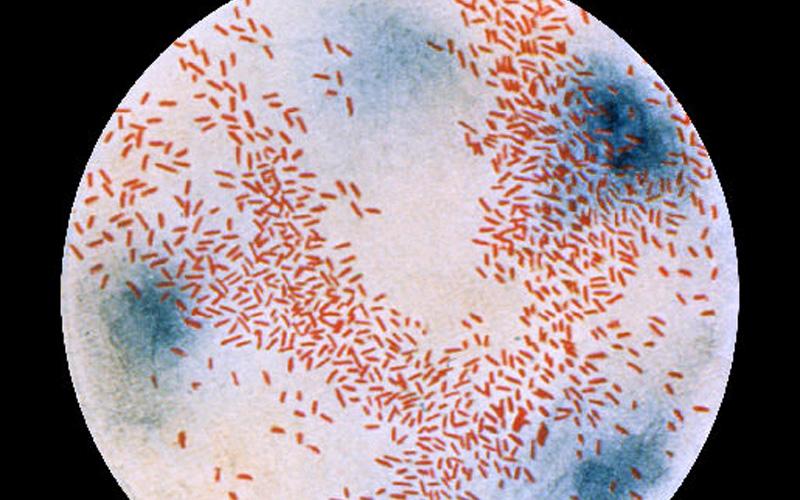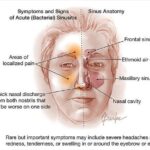Acute bacterial sinusitis is a common condition that affects millions worldwide, with Haemophilus parahaemolyticus emerging as a significant pathogen in recent years. This article delves into the intricacies of acute Haemophilus parahaemolyticus bacterial sinusitis, providing a comprehensive overview of its causes, symptoms, diagnostic methods, and treatment options. By understanding this condition in depth, patients and healthcare providers can better manage and prevent its complications.

What is Acute Haemophilus Parahaemolyticus Bacterial Sinusitis?
Acute bacterial sinusitis refers to the inflammation of the sinuses caused by bacterial infection. When Haemophilus parahaemolyticus is the causative agent, the condition is termed acute Haemophilus parahaemolyticus bacterial sinusitis. This bacterium is a gram-negative organism known for its role in respiratory infections, particularly in immunocompromised individuals or those with pre-existing sinus conditions.
The sinuses are air-filled cavities located within the skull, and their inflammation can lead to symptoms such as nasal congestion, facial pain, and purulent discharge. Unlike viral sinusitis, which often resolves on its own, bacterial sinusitis requires targeted antibiotic therapy to prevent complications.
Causes and Risk Factors of Haemophilus Parahaemolyticus Sinusitis
Haemophilus parahaemolyticus thrives in environments where the immune system is compromised. The primary causes and risk factors include:
- Upper Respiratory Infections: Preceding viral infections can create a conducive environment for bacterial colonization.
- Anatomical Abnormalities: Deviated septum or nasal polyps can obstruct sinus drainage, promoting bacterial growth.
- Chronic Sinusitis: Individuals with recurrent sinus infections are at higher risk.
- Immunodeficiency: Conditions such as HIV or diabetes weaken the immune response, increasing susceptibility.
- Environmental Factors: Exposure to pollutants or allergens can exacerbate sinus inflammation.
Symptoms of Acute Haemophilus Parahaemolyticus Bacterial Sinusitis
The symptoms of this condition are often severe and persistent, distinguishing it from viral sinusitis. Key symptoms include:
- Nasal Congestion: Difficulty breathing through the nose due to blockage.
- Facial Pain and Pressure: Often localized to the forehead, cheeks, or around the eyes.
- Purulent Nasal Discharge: Thick, yellow or green mucus indicative of bacterial infection.
- Reduced Sense of Smell and Taste: Inflammation affects olfactory function.
- Fever and Fatigue: Systemic signs of infection.
- Cough: Often worse at night due to postnasal drip.
Diagnosing Haemophilus Parahaemolyticus Sinusitis
Accurate diagnosis is crucial for effective treatment. Diagnostic methods include:
- Clinical Evaluation: Assessment of symptoms and medical history.
- Nasal Endoscopy: Visual examination of the nasal passages and sinuses.
- Imaging Studies: CT scans or MRIs to evaluate sinus inflammation and obstruction.
- Microbiological Testing: Culture and sensitivity analysis of nasal discharge to identify Haemophilus parahaemolyticus and determine antibiotic susceptibility.
Treatment Options
Treatment focuses on eradicating the bacterial infection and alleviating symptoms. Key approaches include:
- Antibiotic Therapy: First-line antibiotics such as amoxicillin-clavulanate are commonly prescribed. For penicillin-allergic patients, alternatives like doxycycline or fluoroquinolones may be used.
- Nasal Corticosteroids: Reduce inflammation and improve sinus drainage.
- Saline Irrigation: Flushes out mucus and bacteria from the nasal passages.
- Analgesics: Over-the-counter pain relievers like ibuprofen or acetaminophen for pain management.
- Surgical Intervention: In cases of chronic or recurrent sinusitis, functional endoscopic sinus surgery (FESS) may be necessary to remove obstructions.
Preventing Haemophilus Parahaemolyticus Sinusitis
Preventive measures can significantly reduce the risk of infection:
- Maintain Good Hygiene: Regular handwashing and avoiding close contact with infected individuals.
- Manage Allergies: Control allergic rhinitis to prevent sinus inflammation.
- Stay Hydrated: Adequate fluid intake keeps mucus thin and promotes drainage.
- Use Humidifiers: Maintain optimal humidity levels to prevent nasal dryness.
- Vaccination: Consider vaccines for influenza and pneumococcal infections to reduce secondary bacterial sinusitis.
Acute Haemophilus parahaemolyticus bacterial sinusitis is a condition that demands prompt diagnosis and targeted treatment to prevent complications. By understanding its causes, symptoms, and management strategies, patients and healthcare providers can work together to achieve optimal outcomes. Early intervention, combined with preventive measures, can significantly reduce the burden of this condition.

